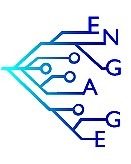
by Sisem Ektirici
Neurodegenerative diseases (NDHs) such as Parkinson’s disease, Alzheimer’s disease, and Prion diseases are known as ‘protein misfolding disorders’. The economic impact of NDHs, including human and non-human costs, is staggering and represents a major public health concern for countries around the world. World Health Organization (WHO) projections estimate that by 2040, NDHs will surpass cancer to become the second leading cause of death worldwide, with an estimated economic impact of 2 trillion US dollars by 2030. Parkinson’s disease is the second most common neurodegenerative disease and is estimated to affect 4.1-4.6 million people worldwide, occurring in about 1% of individuals over 60 years of age; this number is predicted to more than double by 2030 as populations age (Mhyre T.R. et all, 2012, Parkinson’s Disease).

Although Parkinson’s disease is a very common disease worldwide, the underlying mechanisms of the disease are still not fully explained. It is thought that both environmental and genetic factors may play a role in the etiology of the disease. Various theories include chemical reactions, exposure to specific environmental factors and neurotoxins, and genetically determined susceptibility or susceptibility (Ball N. et all, Parkinson’s Disease and the Environment, 2019 ). Any of these theories or a combination of them may be the causes of Parkinson’s Disease.
Alpha synuclein is a 14kDa protein found in the human brain, regulating neurotransmitter release and synthesized by the SNCA gene. Although this protein is the subject of thorough investigation in numerous studies, its precise purpose is still unknown. A mutation in the gene for α-synuclein was shown to be linked to family cases of early-onset Parkinson’s disease in 1997 (Spillantini M.G. et al., α-Synuclein in Lewy Bodies, 1997) and its aggregates were discovered to be the main constituents of Lewy bodies, which are the hallmarks of Parkinson’s disease. It has been found that alpha-synuclein protein, which binds to cell membranes and interacts with other proteins, is not only associated with Parkinson’s disease, but also with diseases such as Alzheimer’s (Twohig D. et al., α-Synuclein in the Pathophysiology of Alzheimer’s Disease, 2019) and dementia (Schulz-Schaeffer et al., he Synaptic Pathology of α-Synuclein Aggregation in Dementia with Lewy Bodies, Parkinson’s Disease and Parkinson’s Disease Dementia, 2010) Although the reason why alpha-synuclein structure and pathways cause these diseases has not been fully elucidated, it is thought that these reasons are due to protein misfolding and disorders binding to cell membranes, as a result of intensive studies (Mehra S. et al., α-Synuclein Misfolding and Aggregation: Implications in Parkinson’s Disease Pathogenesis, 2019). Investigation of these deformations in protein misfolding is of great importance, as studies have shown that protein misfolding is not only associated with neurodegenerative diseases, but also with diseases such as cancer, heart diseases and type II diabetes. Pharmacological chaperones focuses on secondary interactions such as hydrogen bonds and van der Waals bonds between proteins and molecules with specific properties intended to inhibit misfolding.
Within the scope of my thesis, the alterations in the natural structure of the alpha-synuclein protein will be examined. In order to prevent misfolding in the protein structure, interaction between protein-specific and thermosensitive Poly (N-isopropylacrylamide) (PNIPAM) polymer and alpha-synuclein protein will be examined.
